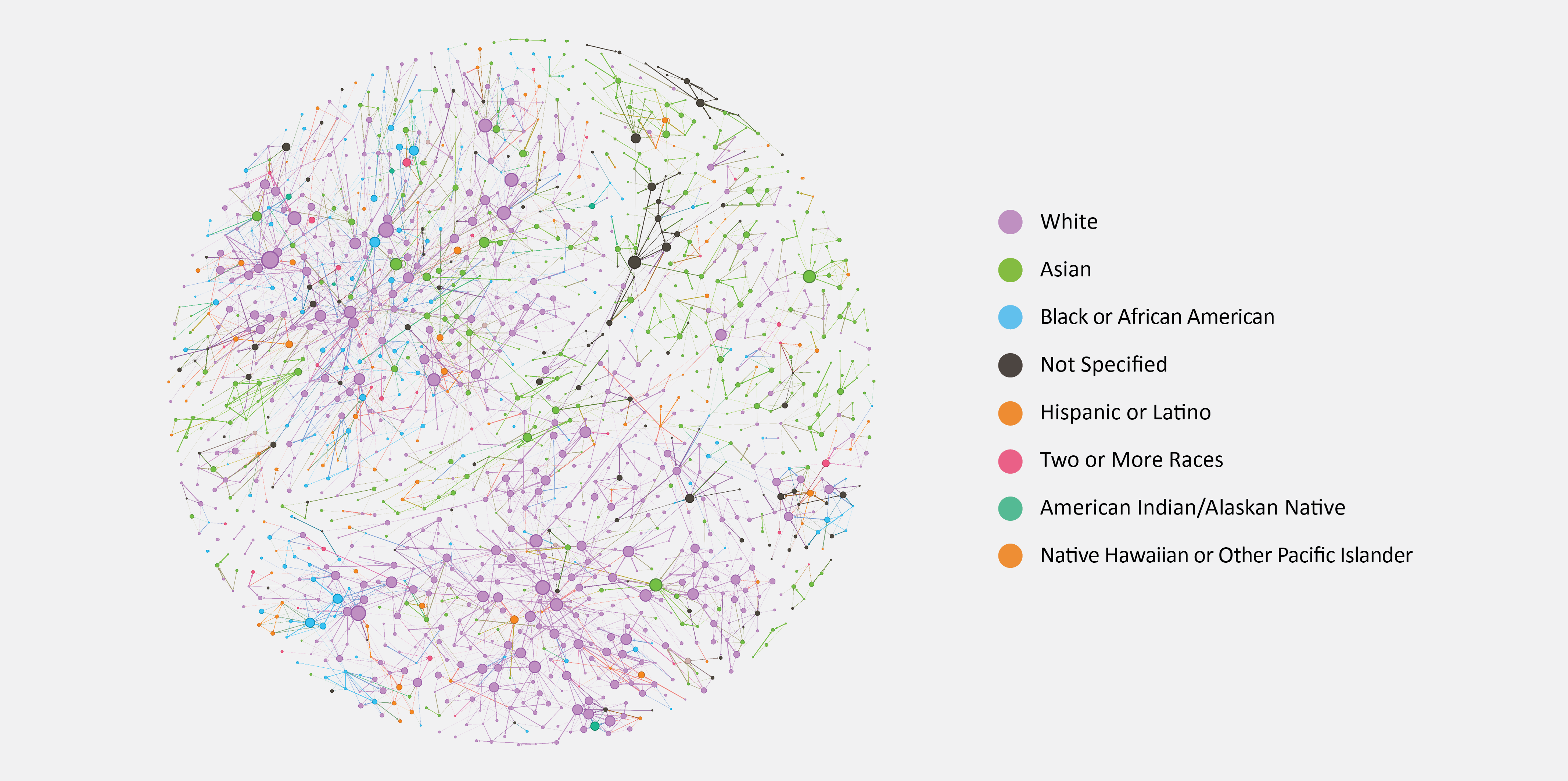Using network analysis, we recently measured employees’ tendency to connect with others based on race, ethnicity and gender. As it turns out, people are more likely to form relationships with those who are like them (e.g., assortativity based on race = .202, indicating a moderate tendency for people to connect with others of similar backgrounds). This finding isn’t too surprising. After all, it’s easier to connect with those with whom we share something in common. That’s why when we first meet someone, we ask questions like, “What do you do for work?”, “Where do you live?”, and “Do you have kids?” We’re looking for a basis to connect.
The good news is that similarity fosters connection and builds trust. The bad news is that it can lead to situations where everyone looks, thinks, and acts the same, resulting in fragility, little innovation and barriers for people from underrepresented groups. That’s one reason we’re fans of diversity, equity and inclusion efforts.

So, what’s the key takeaway? We can’t be passive. As leaders we need be intentional about how we foster networks within our organizations and beyond.
- Embrace strategies that encourage diverse connections
- Create opportunities for different groups to interact and collaborate
- Be conscious of the natural tendencies in networking, and guide your teams to build bridges across different groups
By doing so, we can unlock the true potential of our workforce, fostering an environment of creativity, understanding, and inclusivity. Let’s make our informal networks as diverse and vibrant as our organizational goals!
